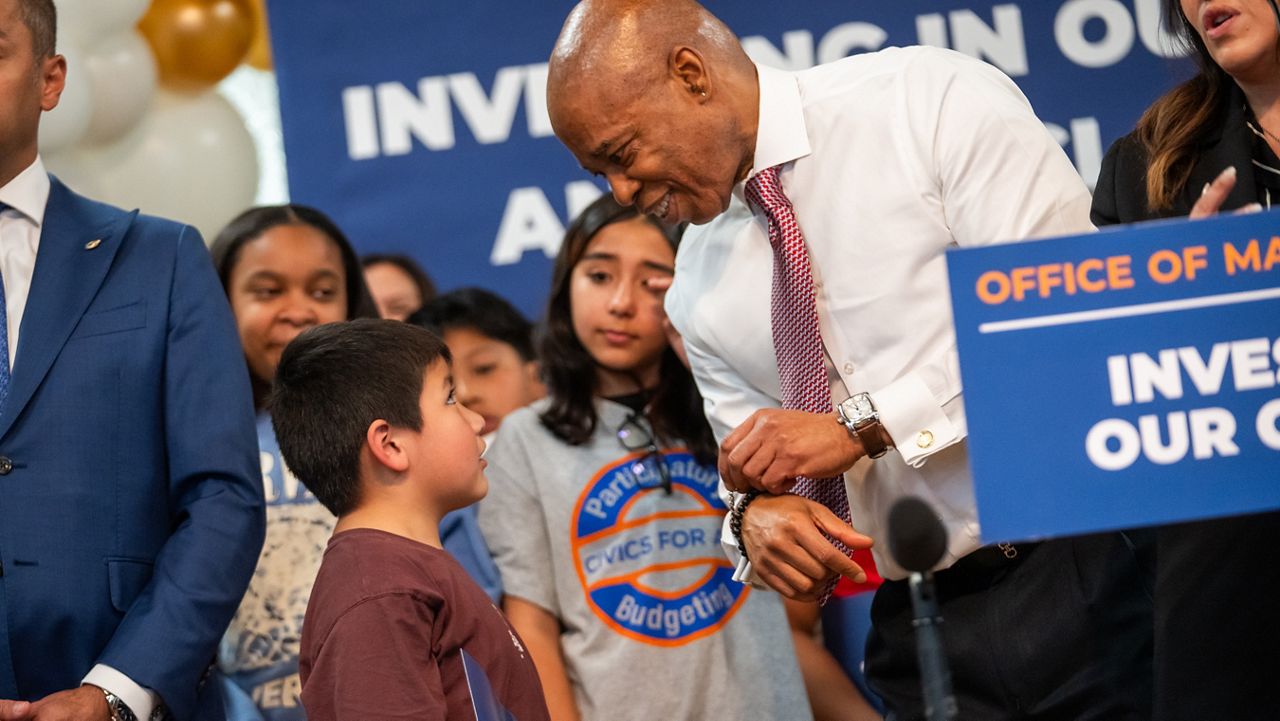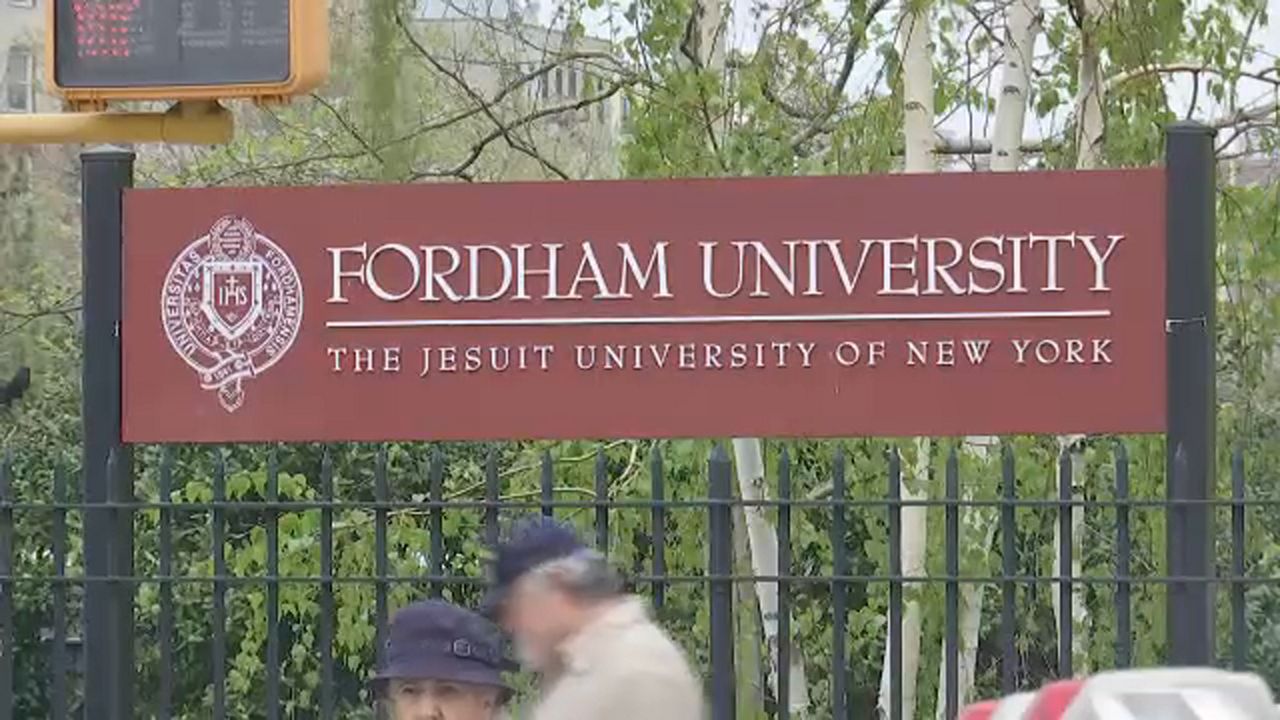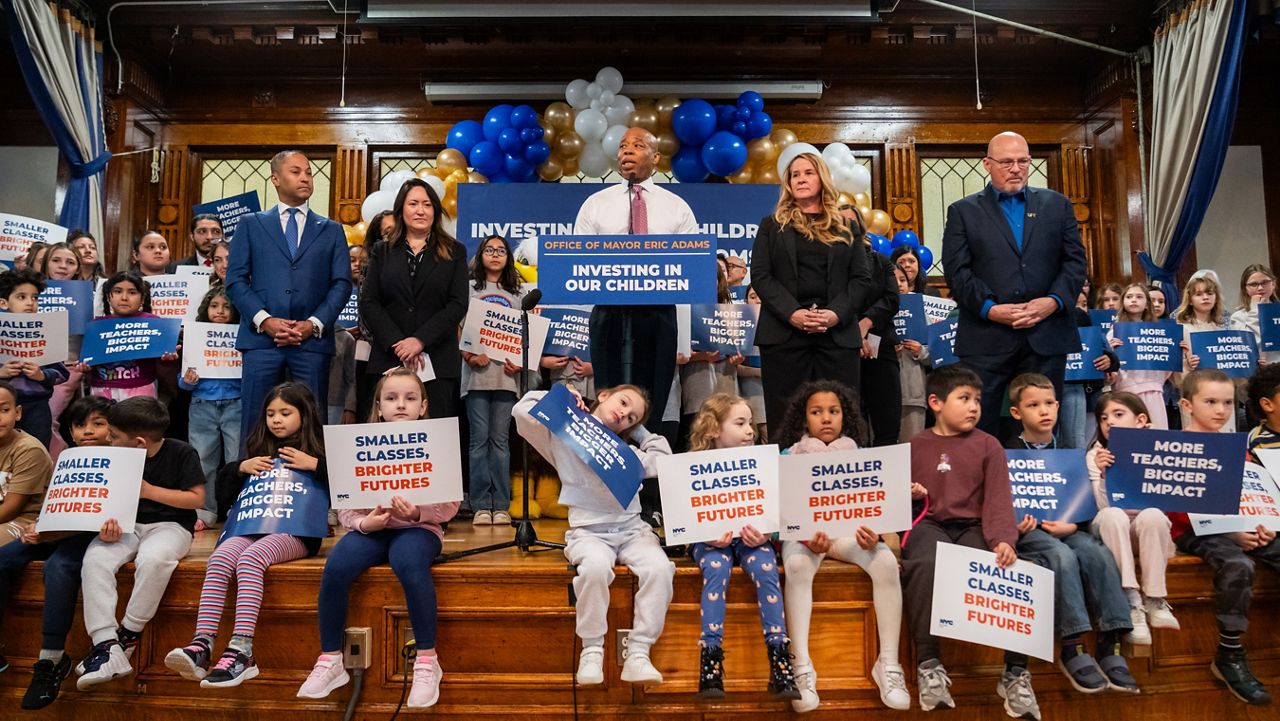More than 300,000 students in schools serving lower-income children are stuck in crowded classrooms, according to a new analysis from the United Federation of Teachers.
“This is why it is so frustrating when we hear the Department of Education, the mayor and his administration keep talking about how they don’t believe they’ll be able to meet the implementation of this law. It is just wrong,” Michael Mulgrew, the president of the teachers’ union, said.
What You Need To Know
- At 665 Title I schools, at least half the classes exceeded the state law limits this year
- The union highlighted that figure after critics have argued a bill to lower class size will disproportionately help schools in wealthier neighborhoods
- The new law is being phased in over the a five-year period, and while the city is in compliance now, they've been skeptical about how they'll afford to stay in compliance
A state law signed by Gov. Kathy Hochul in 2022 requires the city to drastically reduce maximum class sizes in public schools — a process that will be phased in over five years.
The law caps classes at 20 for students in kindergarten through third grade, 23 students for grades four through eight and 25 students for high school classes. Physical education and performing classes can have up to 40 students.
This year, only 20% of classrooms around the city need to be in compliance with the caps. That increases by 20% each year until it’s fully phased in.
Critics, including the education department, have argued the legislation will disproportionately benefit popular, high-performing schools that attract wealthier families.
But the UFT’s analysis of city data released last week found crowded classrooms at Title I schools, where at least 40% of children are from low-income schools.
The union found that at 665 of those schools, at least half the classes exceeded the state law limits this year; at 40 of them, every class was over the limits.
“The neediest children of our city deserve what the rest of the children in the state already have,” Mulgrew said.
The union gathered with elected officials outside the Brooklyn Landmark School in Ocean Hill, with elected officials, teachers and parents.
Beruryah Batyehudah said her daughter’s first grade class at the school has 29 students — making it hard for her to love learning.
“It’s impossible for my child to be heard, seen and share a love for learning with so many other voices and bodies in a row. All with the same eagerness to be heard, seen and valued and to learn,” she said. “How can this prepare our children for success?”
The DOE says it will cost $1.9 billion to implement the law, not including the cost of building new classrooms — and argues much of that will go to already affluent schools.
“It is very clear and has been demonstrated by multiple independent analyses that the districts with the most classes over the caps are in the city’s most affluent communities, which takes resources out of schools with the highest needs,” Nicole Brownstein, a DOE spokeswoman, said. “Our recently released class size report shows that we are fully in compliance for this school year with the state’s new class size mandates, however we continue to call upon our partners in State and Federal government to support us with additional funding in maintaining compliance in the coming years.”




%20Pkg%20Class%20Size%20CG?wid=320&hei=180&$wide-bg$)




